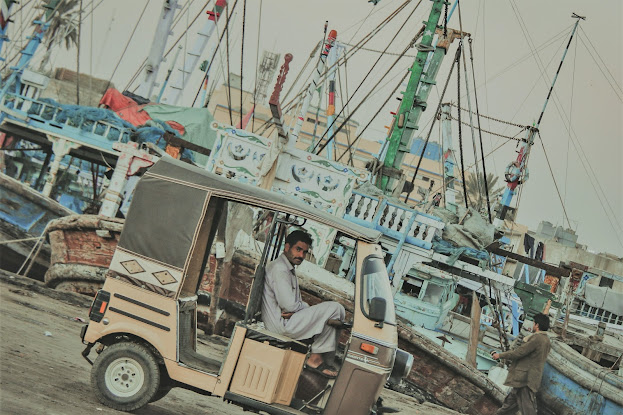Tourism in Pakistan and Gilgit Baltistan After Covid-19 and How The Government Can Promote Tourism In Country
Tourism in Pakistan and Gilgit
Baltistan After Covid-19 and How The Government Can Promote Tourism In Country
TOURISM IN PAKISTAN
Pakistan is the fifth most populous
country in the world and affected significantly for a long time period. Due to the pandemic, it is estimated that the total
revenue losses on Pakistan are declining at $34m including $10.7m on business
and trade. $12.2m on agriculture and over $10.8m on hotel, transport and
manufacturing. Pakistan’s tourism and hospitality industry is a
developing market, and in recent years, Pakistan has pinned her expectations on
the forthcoming arrival of foreign tourists, hoping for a safe and warm welcome. Although the hospitality industry is steadily improving, the COVID-19
crisis continues to exert profound impacts on how hospitality companies work.
Hospitality industries are required to make significant improvements to their
activities in the COVID-19 market climate in order to maintain employees’ and
customers’ health and safety and enhance customers’ ability to patronize their
business.
Tourism and the hospitality
industry plays a vital role in the creation of job opportunities, income
generation, and the source of foreign exchange earnings. Since May 18, 2020,
most restaurants in Gilgit Baltistan have steadily reopened. The government has
implemented stringent COVID-19 health and safety standards, and the experience
of restaurants implementing these new measures may provide useful lessons for
restaurants in other regions. According to the GB Tourism Department, more than
2 million people visit Gilgit Baltistan every year from across the country.
According to PTDC, the tourism sector of Pakistan comprises low-income wagers
and medium-size entrepreneurs whose income depends upon the tourist season. In
Gilgit Baltistan, the tourism industry has experienced phenomenal growth and is
one of the fastest-growing industries. Tourism plays a significant economic
part in the country’s revenue generation as well as Gilgit Baltistan. Tourism
creates significant foreign exchange earnings and employment prospects in
addition to contributing to the country’s economic growth. Gilgit Baltistan has
provided visitors with a variety of tourism options, including cultural and
heritage tourism, trekking tourism, and to visit beautiful places .there are a
number of traditional food categories that have grown in popularity in the last decade. Since May 18, 2020, most restaurants in Gilgit Baltistan have steadily
reopened.
TOURISM IN GILGIT BALTISTAN
Gilgit Baltistan is renowned for tourism due to scenic views, Heritage Sites, and unique climate, and sources of tourist attractions. As a result, visitors from all over the world begin to flock to Gilgit Baltistan's mountainous areas, such as Hunza, Astore, Ghizer, Gilgit, Skardu, and Ghanche valleys, which are popular for summer tourism. The scenic views in these mountainous regions include sky-high ranges, glaciers, rivers, streams, and waterfalls. According to gulf news.com on January 02, 2021, the government of Pakistan is not only concerned with developing job opportunities by encouraging tourism practices; however, it was also concerned with preserving the natural beauty of tourist destinations by promoting eco-tourism in the Gilgit Baltistan. Gilgit Baltistan is one of the few locations in Pakistan where a dual situation occurs. Tourism is a vital part of the GB economy while also serving as a major tourist destination for entire Pakistan
The tourism and hospitality
industry makes a significant contribution to the Pakistani economy by providing
numerous employment opportunities, jobs, and foreign exchange earnings.. Over
the several years, tourism has made a significant contribution to the Pakistan
economy. While Pakistan’s tourism receipts have fluctuated significantly in
recent years, they have continued to rise from 2000 to 2019, reaching 948
million US dollars in 2019. (Rodríguez-Antón & Alonso-Almeida, 2020). In
2012, 46.7 million tourists visited Pakistan. When the situation is calm and
favorable, and a decrease when there is a crisis. The COVID-19 has a negative
impact on social engagement and leisure. As a result, 93.9 percent of visitors
will be able to stop visiting other locations. In response to these issues, the
Pakistani government has made attempts to include an Rs. 1.2 trillion package
and an Rs. 100 billion Supplementary Grant to low-level community and High-risk
disadvantaged people, such as the aged who have no social network, and school
children, are among these groups. -earning households
How the Government Can Promote Tourism In Country
Tourism promotion is a
multifaceted, ongoing project in which all levels of government, private
businesses, and the general public play an active role.
Here are some
points to consider.
- 1. Educate the public (through schools and the media) about the value of tourism to the country's economy. Every citizen should consider themselves an ambassador for the country, extending kindness and a warm welcome to visitors.
- 2. Create and
maintain a contemporary infrastructure, which can take many forms. Electrical
power, clean water, paved roads, contemporary and pleasant modes of
transportation, banking services (credit cards, ATMs), Wi-Fi and mobile
networks, and so on.
- 3. Teach different
languages to children from an early age. A bilingual population is extremely
beneficial in greeting visitors from all over the world and makes them feel
safer and more at ease.
- 4. Encourage
airlines to open routes to the country in exchange for government subsidies.
Airlines will usually not fly to a destination unless there is a demand for it
or unless the route is subsidized by the government in order to create demand.
- 5. Define the
country's main tourism attractions for marketing and branding purposes, such as
nature, religion, arts, culinary, hiking, beaches, historical sites, and so on.
Then, for each of the targeted markets, develop a unique marketing campaign.
- 6. Define
"tourist regions" across the country, with individuals in charge of
promoting tourism and overseeing infrastructure in such areas.
- 7. Create an
interactive, user-friendly, multilingual national tourism website and app as
part of the marketing campaigns listed in 5 and 6 above, where potential
tourists can learn about the destination, get information, and plan their visit
to the country.
8.










Post a Comment